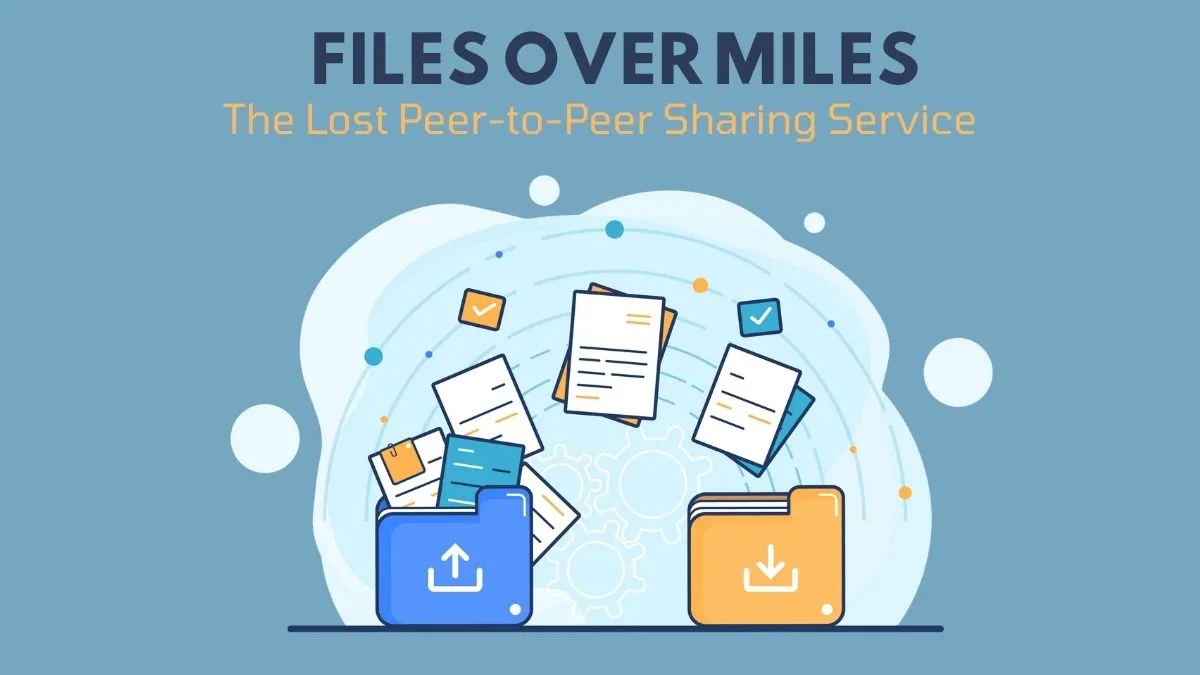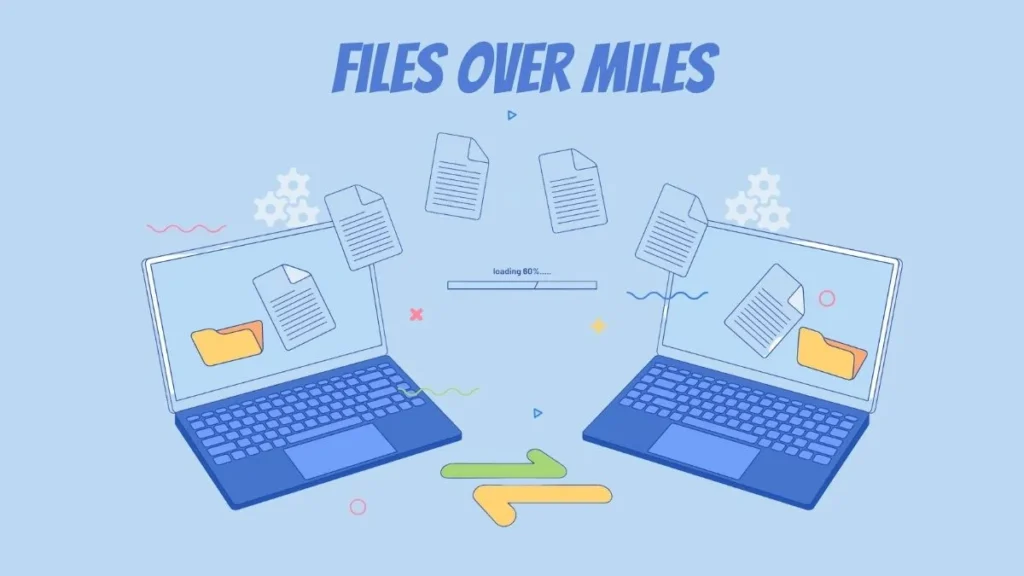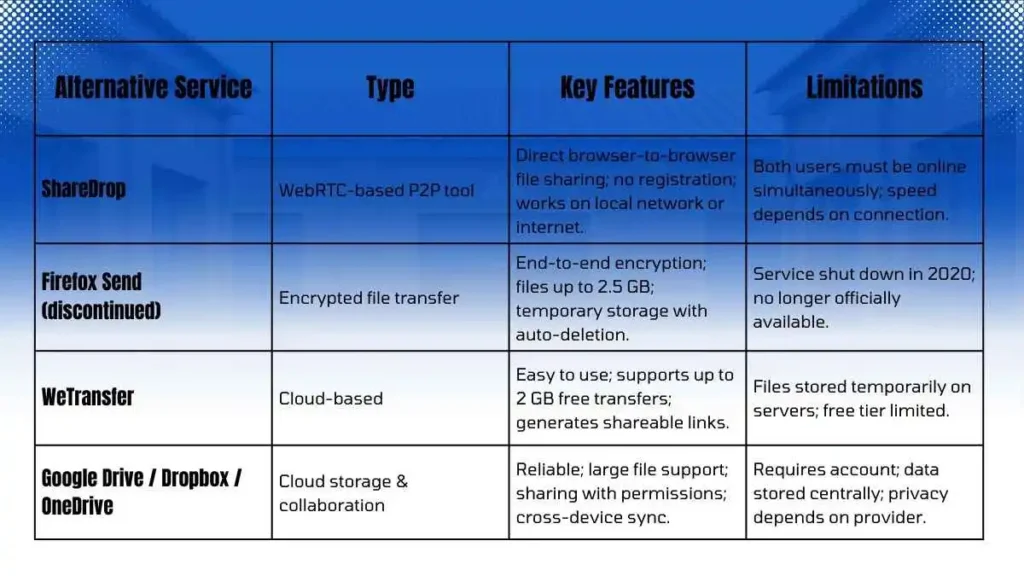Tech
Files Over Miles: The Lost Peer-to-Peer Sharing Service

When I think about the evolution of file sharing on the internet, one name that stands out from the late 2000s is Files Over Miles. It was a short-lived yet innovative tool that allowed users to transfer files directly from one computer to another without the need for an intermediary server. Unlike cloud storage services we rely on today, such as Google Drive or Dropbox, Files Over Miles relied on a peer-to-peer (P2P) connection that functioned directly through a web browser.
Table of Contents
What Was Files Over Miles?
Files Over Miles was a free, web-based service that enabled users to send files directly from their computer to someone else’s, bypassing the need for storage on a central server. This made it different from traditional file-hosting sites, where files were uploaded first and then downloaded by the recipient.
Instead, it allowed files to stream directly between the sender and recipient. Transfers were capped at 2 GB, which at the time was considered generous, especially when many email providers limited attachments to just a few megabytes.
How Files Over Miles Worked
The process of sharing files through Files Over Miles was simple yet groundbreaking for its time:
- File Selection: The sender would choose a file from their computer using the service’s browser interface.
- Unique Link Generation: The system would generate a secure, unique URL.
- Recipient Access: The recipient could open this link in their browser to initiate the transfer.
- Continuous Browser Connection: Both sender and recipient had to keep their browsers open until the transfer was complete.

The Technology Behind the Service
Files Over Miles was based on peer-to-peer networking, a method in which two computers connect directly to exchange data. At its core, the service relied on Adobe Flash technology to establish the connection. While Flash was widely used at the time for interactive web applications, it later became obsolete due to security vulnerabilities and the emergence of modern alternatives, such as HTML5 and WebRTC.
The reliance on Flash meant that it was bound to the technological limitations of its era. Still, it demonstrated the possibilities of serverless file transfer long before decentralized solutions became more mainstream.
Advantages of Files Over Miles
- Direct Transfers: No third-party servers were involved, which enhanced privacy compared to uploading files to a central platform.
- No Registration Required: Users did not need to create accounts, making the service accessible and fast.
- Generous File Size Limit: The 2 GB cap was significant during the late 2000s.
- Convenience: Everything happened inside the browser, avoiding the need for extra software.
Limitations and Challenges
- Dependence on Open Browsers: Both parties had to keep their browsers open for the duration of the transfer, which could be impractical for larger files.
- Connection Stability: Any interruption in the internet connection would cause the transfer to fail.
- Flash Dependency: Since it was built on Flash, the service could not evolve alongside modern web standards.
- Security Concerns: While avoiding central storage improved privacy, the lack of advanced encryption raised concerns over security.
These limitations eventually led users to seek more reliable solutions as cloud storage platforms gained popularity.
Popularity in the Late 2000s
Files Over Miles gained a niche following between 2009 and 2010, especially among tech enthusiasts and students. Its promise of serverless file sharing appealed to those who valued both privacy and efficiency. However, the rise of cloud-based services, combined with the decline of Flash, meant its adoption was short-lived.
By the early 2010s, Files Over Miles became defunct, leaving behind only archived mentions on forums and tech blogs.
Why Files Over Miles Became Defunct
As technology evolved, services offering more reliable and user-friendly solutions emerged. Cloud storage providers such as Dropbox, Google Drive, OneDrive, and WeTransfer began to dominate the file-sharing space. These platforms allowed users to upload files to secure servers, share links, and access data at any time without requiring both parties to be online simultaneously.
Additionally, improvements in browser technology and security protocols shifted the landscape. It eventually faded into obscurity and is now remembered as an early experiment in serverless file sharing.
Best Services for Replacing Files Over Miles

Why the service Still Matters
To me, the significance of Files Over Miles lies not just in what it accomplished, but in the questions it raised about digital communication:
- Can we truly share data without relying on centralized servers?
- How do we balance convenience with privacy in online services?
- What role does technology play in shaping our everyday digital interactions?
These are the same questions that continue to drive innovation in peer-to-peer networking and decentralized platforms today.
FAQs
1. Was Files Over Miles free to use?
Yes, it was completely free and did not require user registration.
2. Could it be used on mobile devices?
No, the service was built on Flash, which limited its use primarily to desktop browsers.
3. Is there any way to access it today?
No, the service is no longer operational and cannot be accessed, although archived mentions can still be found online.
Conclusion
Files Over Miles was a pioneering service that demonstrated the power of direct, browser-based peer-to-peer connections. While it is no longer active, it remains a memorable example of how creative solutions can push the boundaries of internet technology. For those of us who used it, it provided a glimpse of a more private and direct way of sharing files, an idea that still resonates in today’s digital landscape. As technology continues to evolve, I believe the spirit of Files Over Miles lives on in newer, decentralized file-sharing methods that carry forward its vision of simplicity, privacy, and efficiency.
-

 GENERAL5 months ago
GENERAL5 months agoChristofle – For Those Who Dream of Family Heirloom Silver
-

 SPORTS7 months ago
SPORTS7 months agoDiscover the World of Football with Streameast: Watch Your Favorite Leagues and Tournaments
-

 GENERAL4 months ago
GENERAL4 months agoUncovering the World of кинокрадко: The Dark Side of Film Piracy
-

 GENERAL2 months ago
GENERAL2 months agoATFBooru: Anime, Gaming, and Subculture Imageboard























